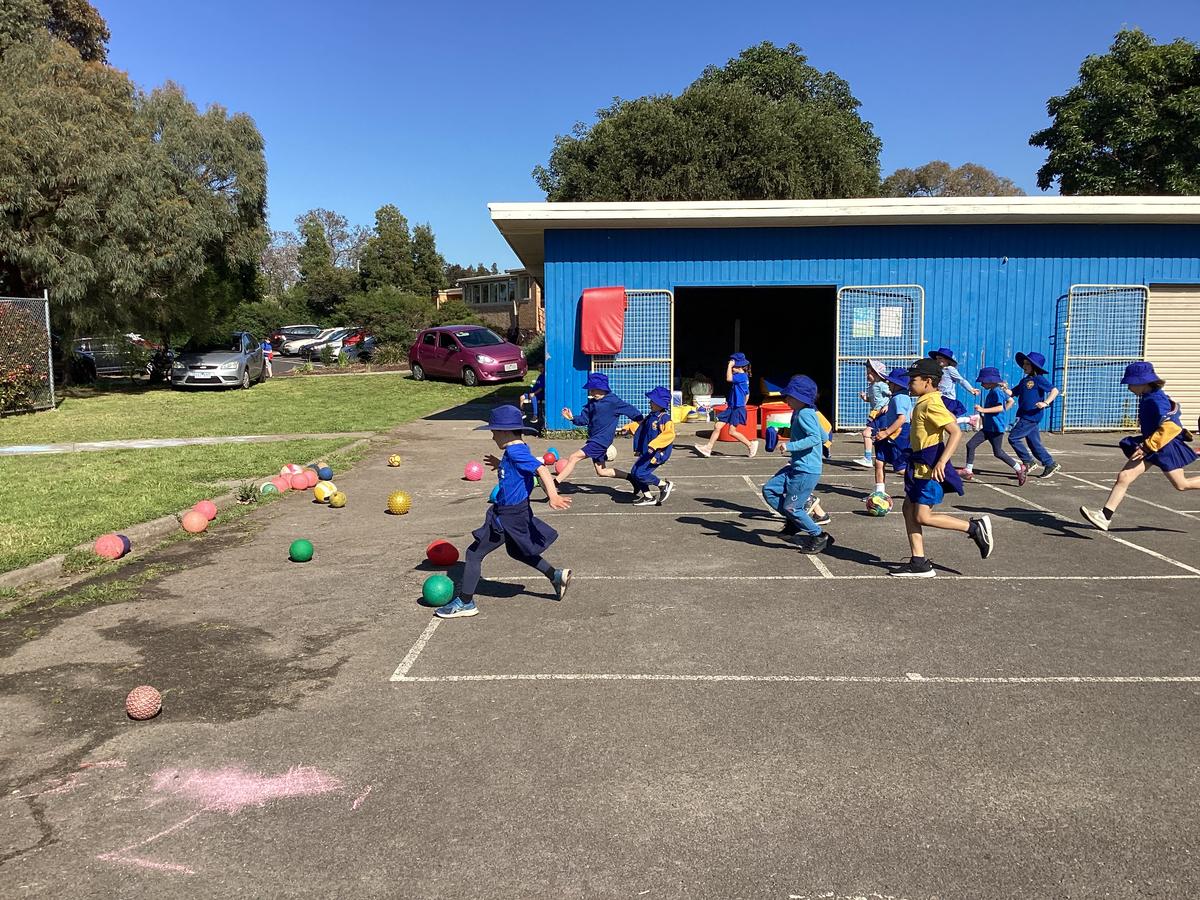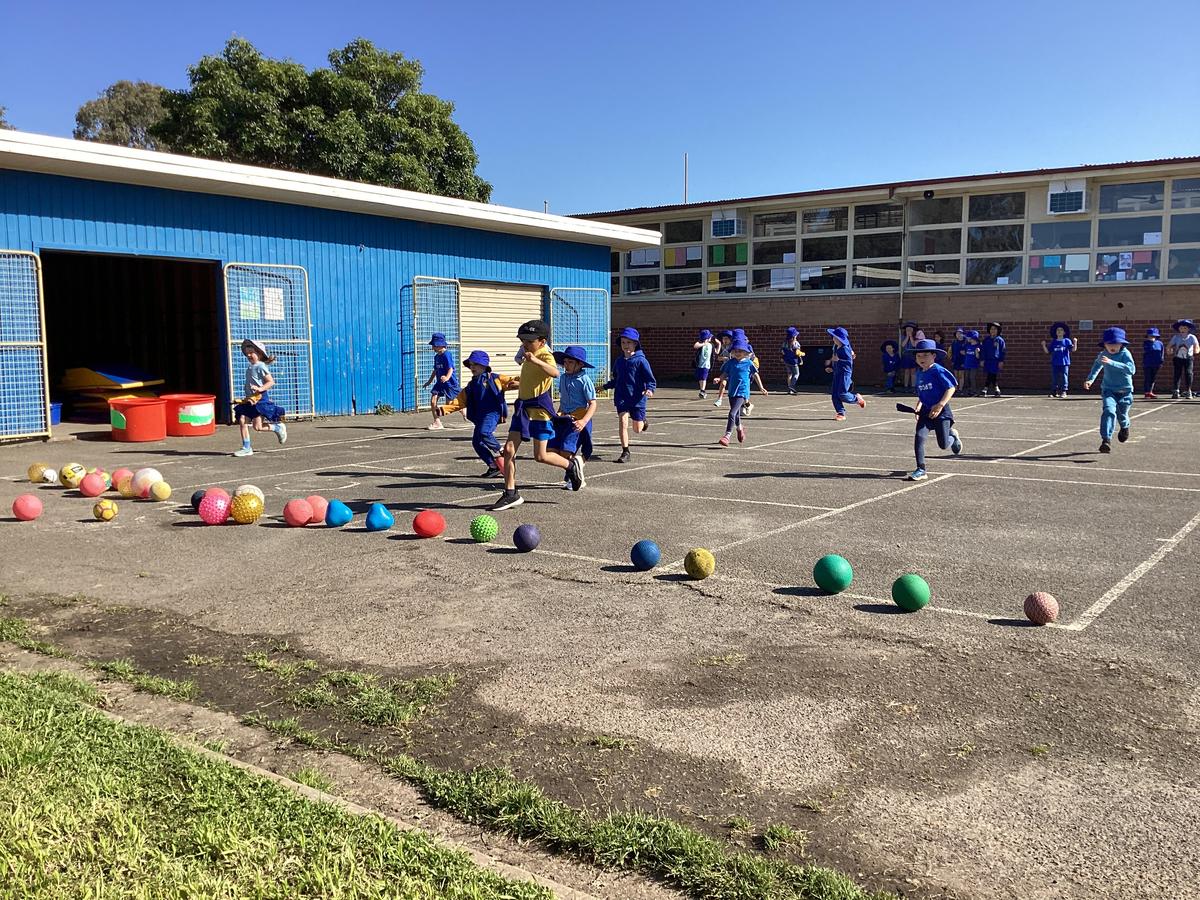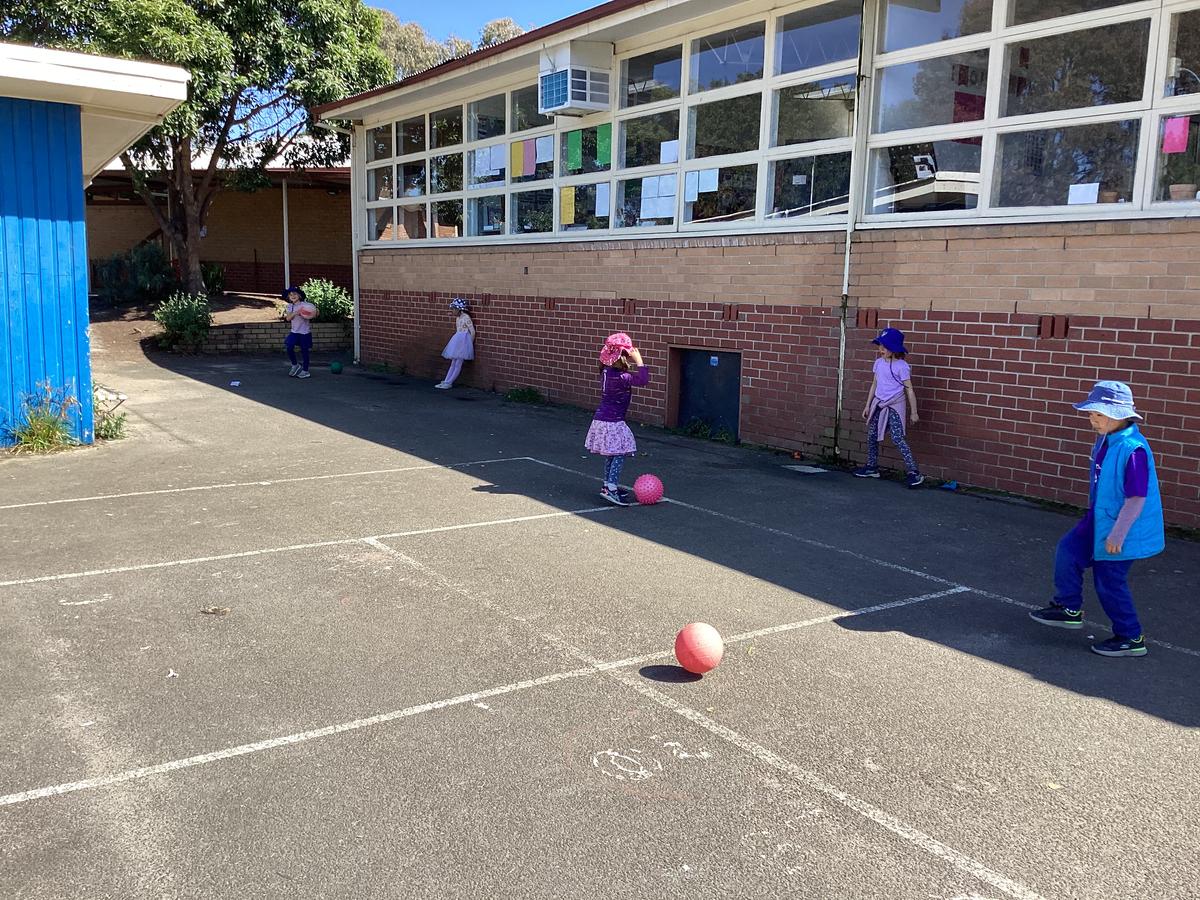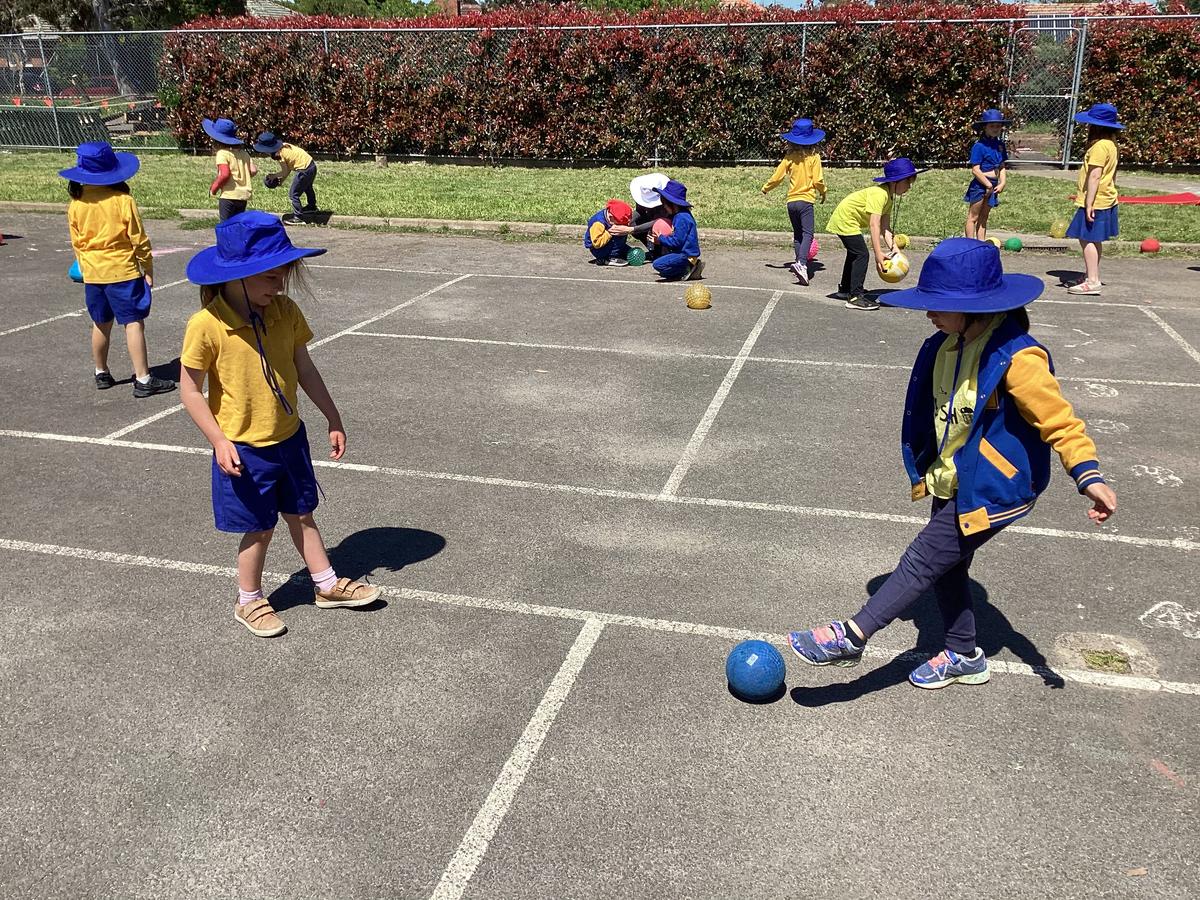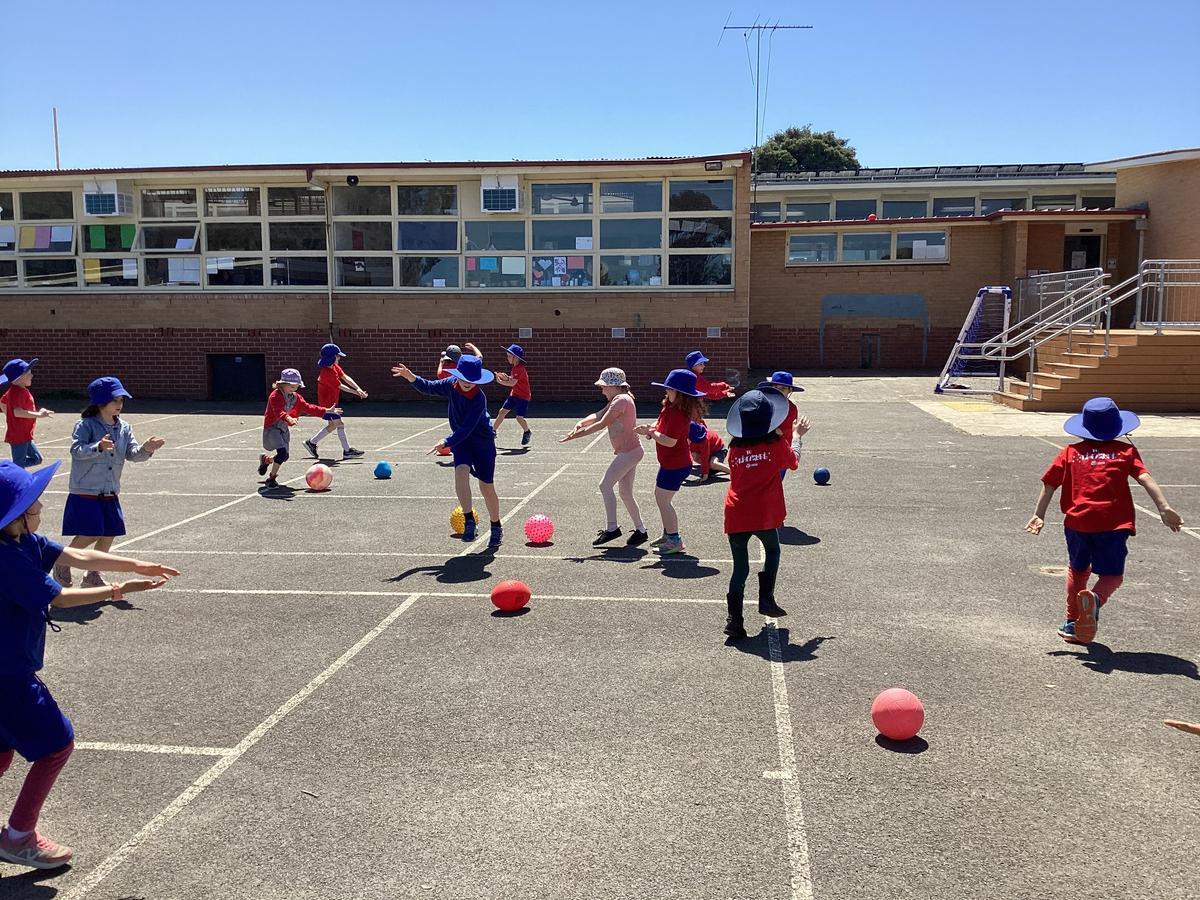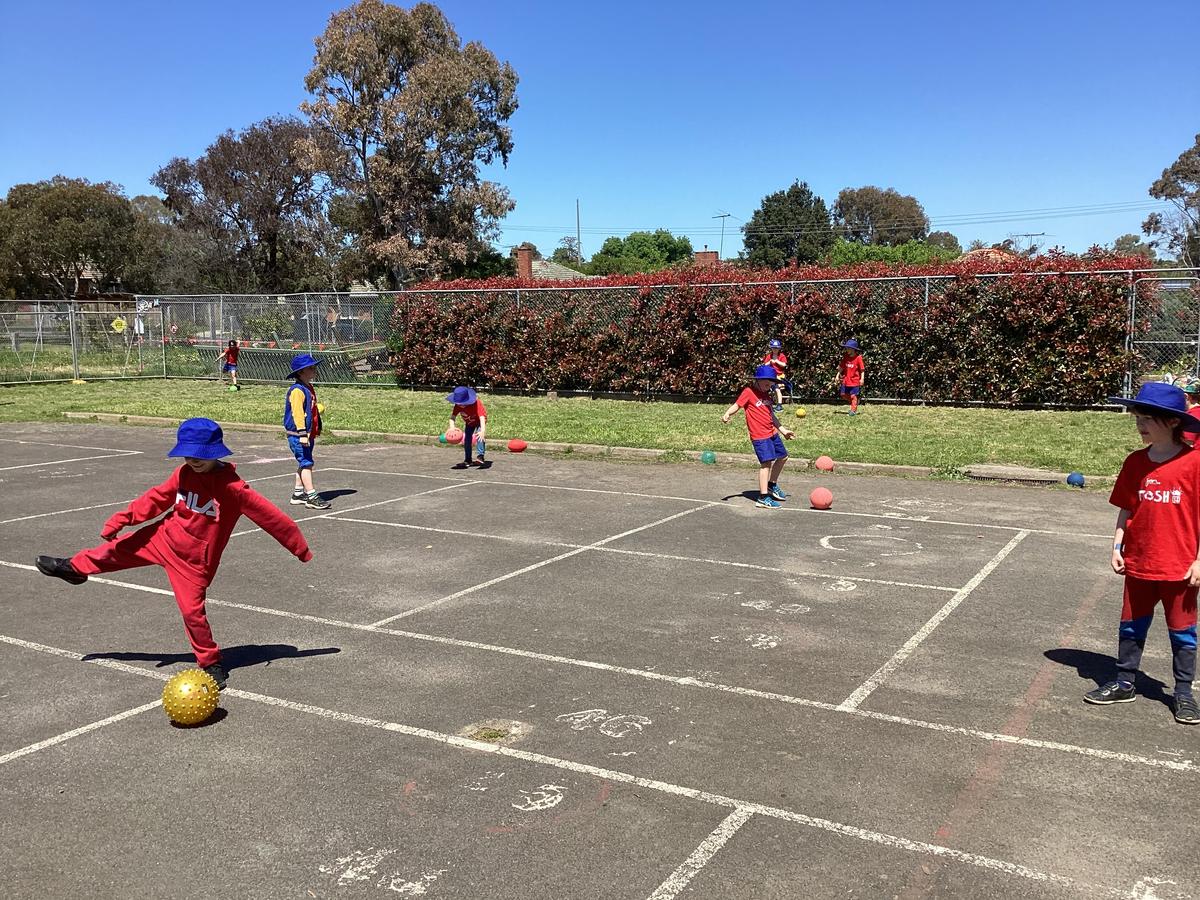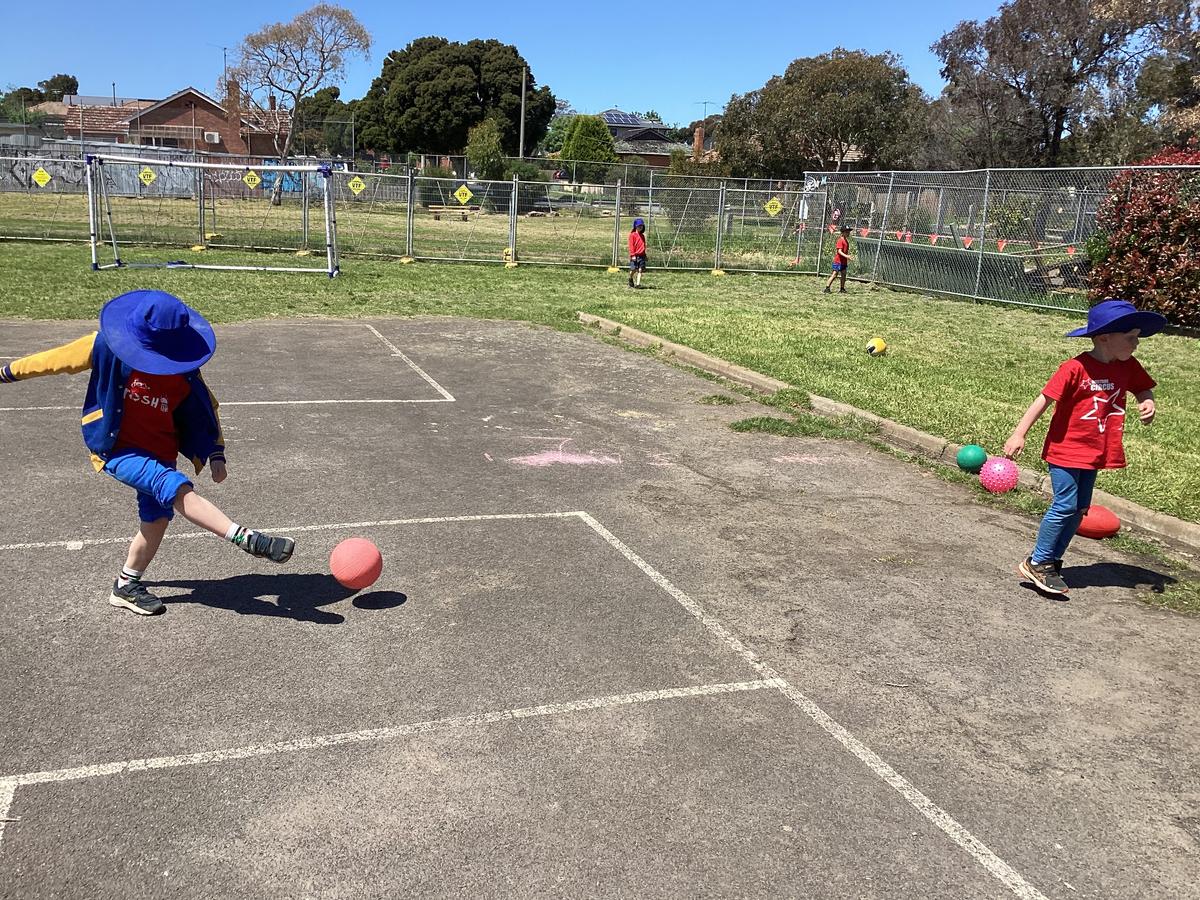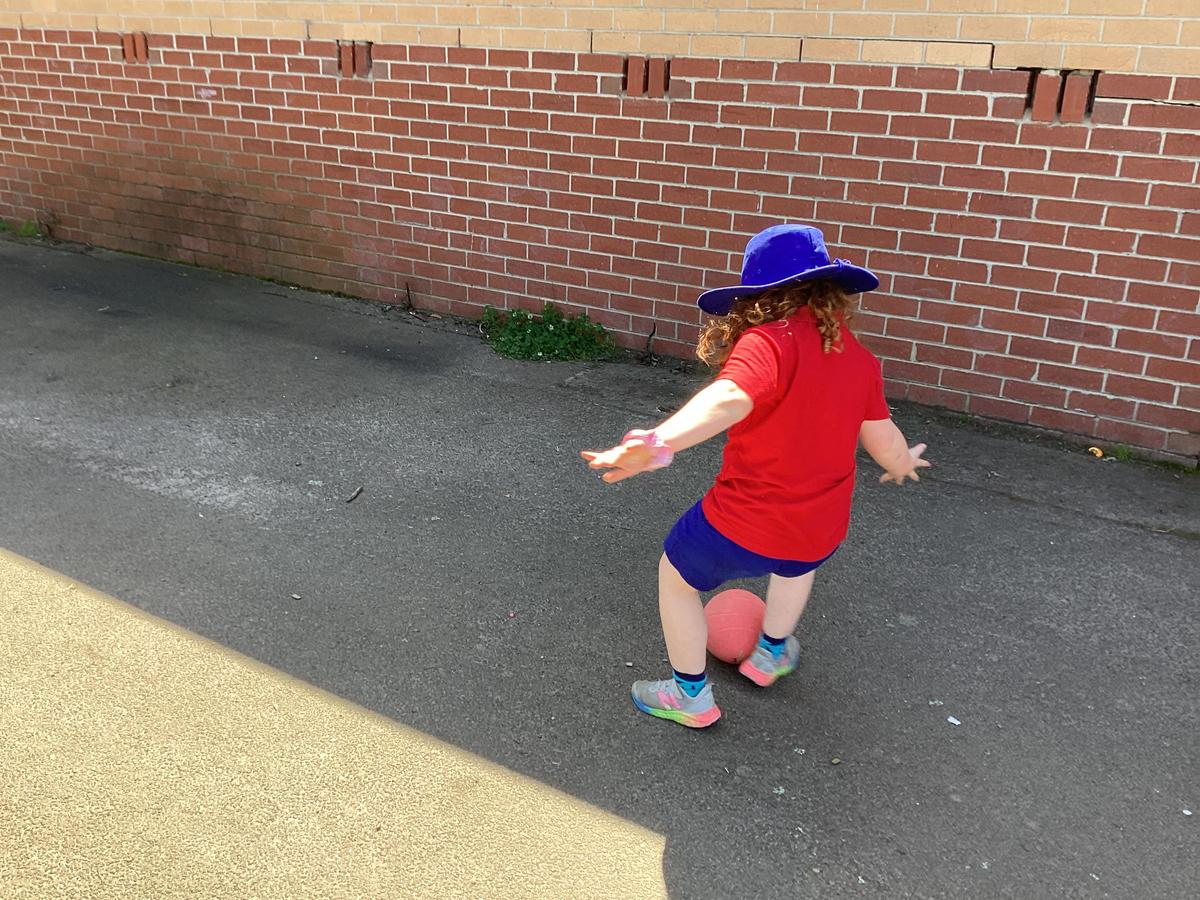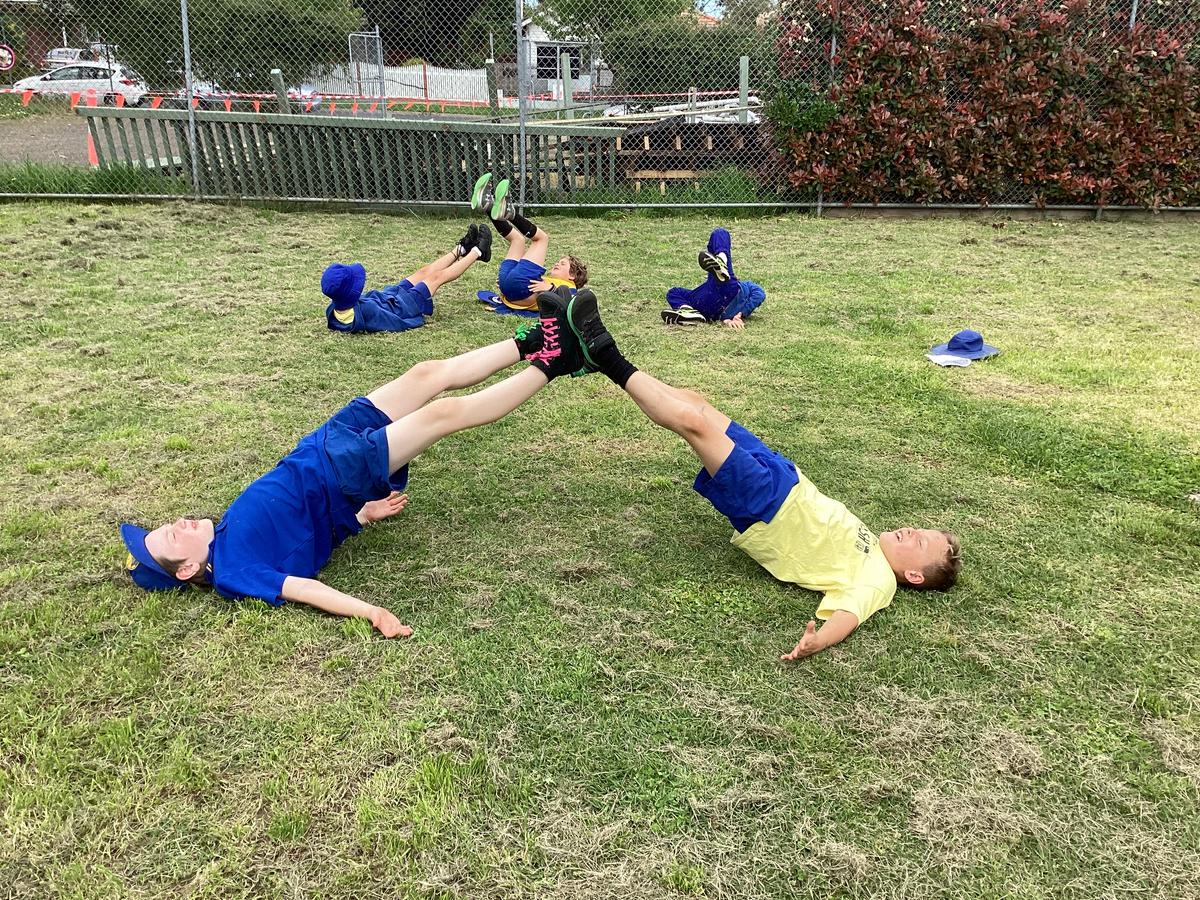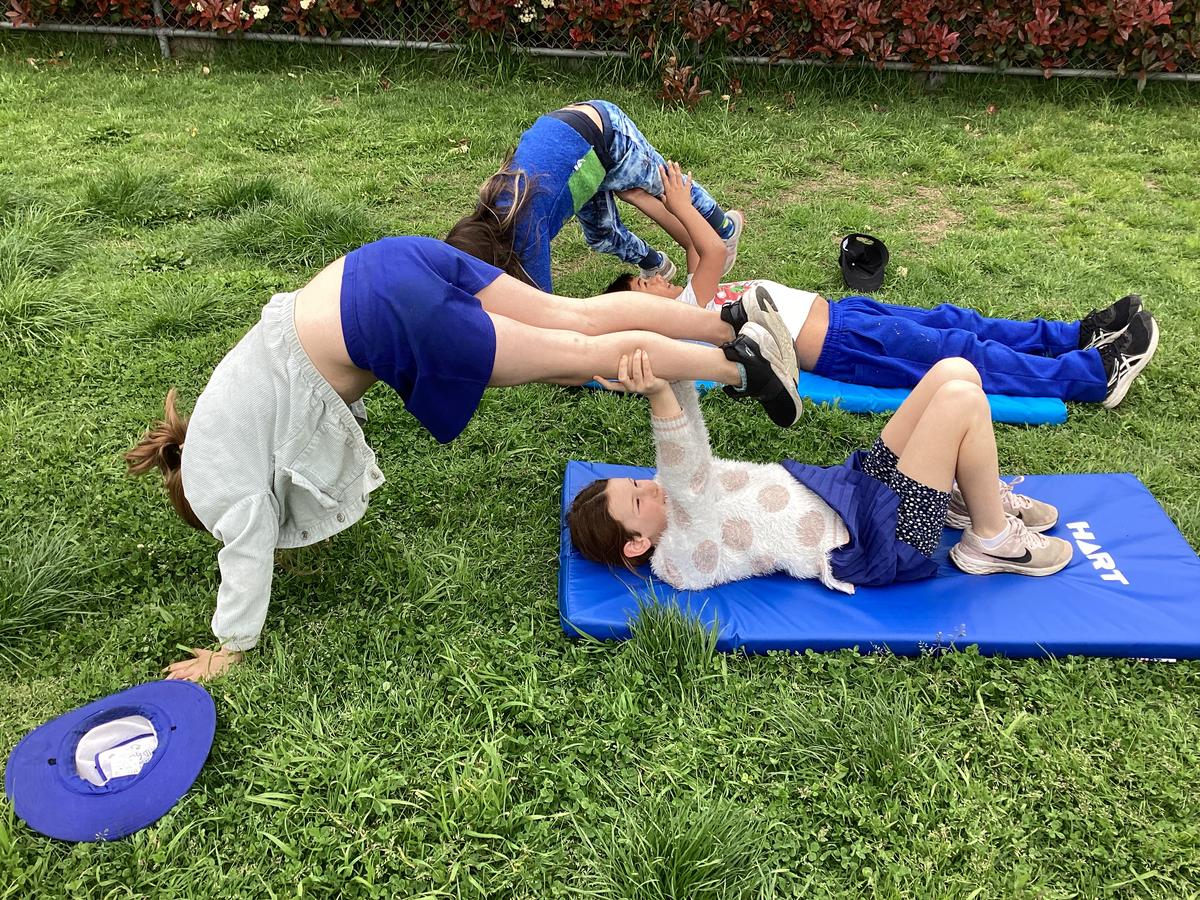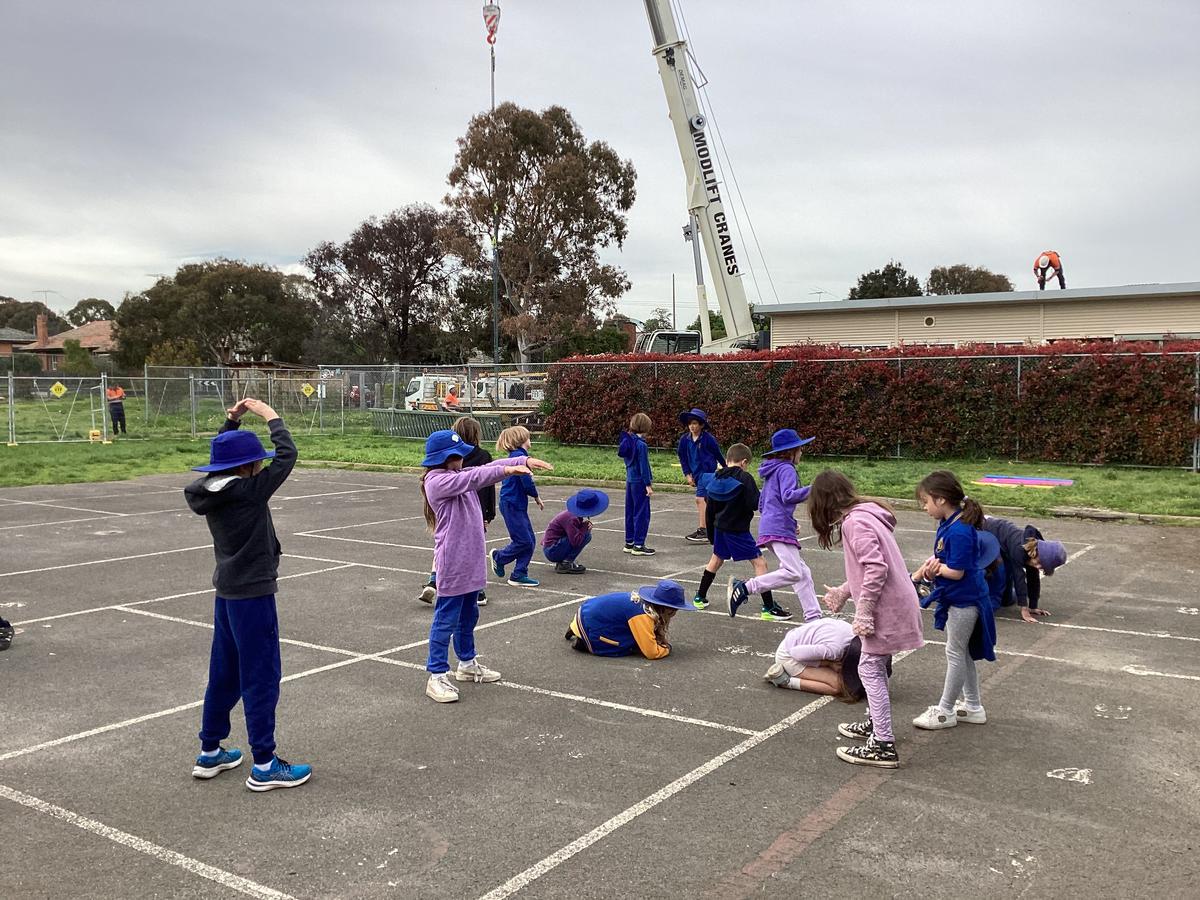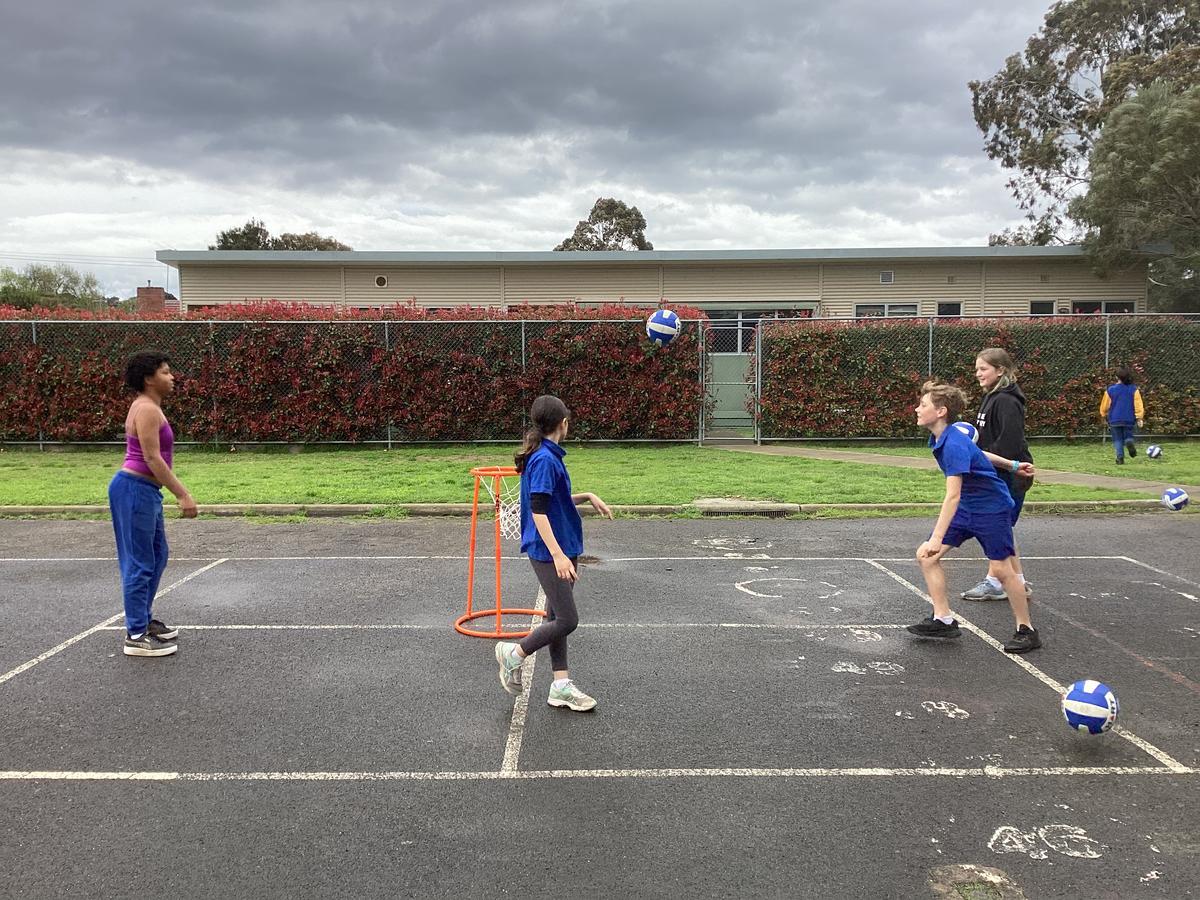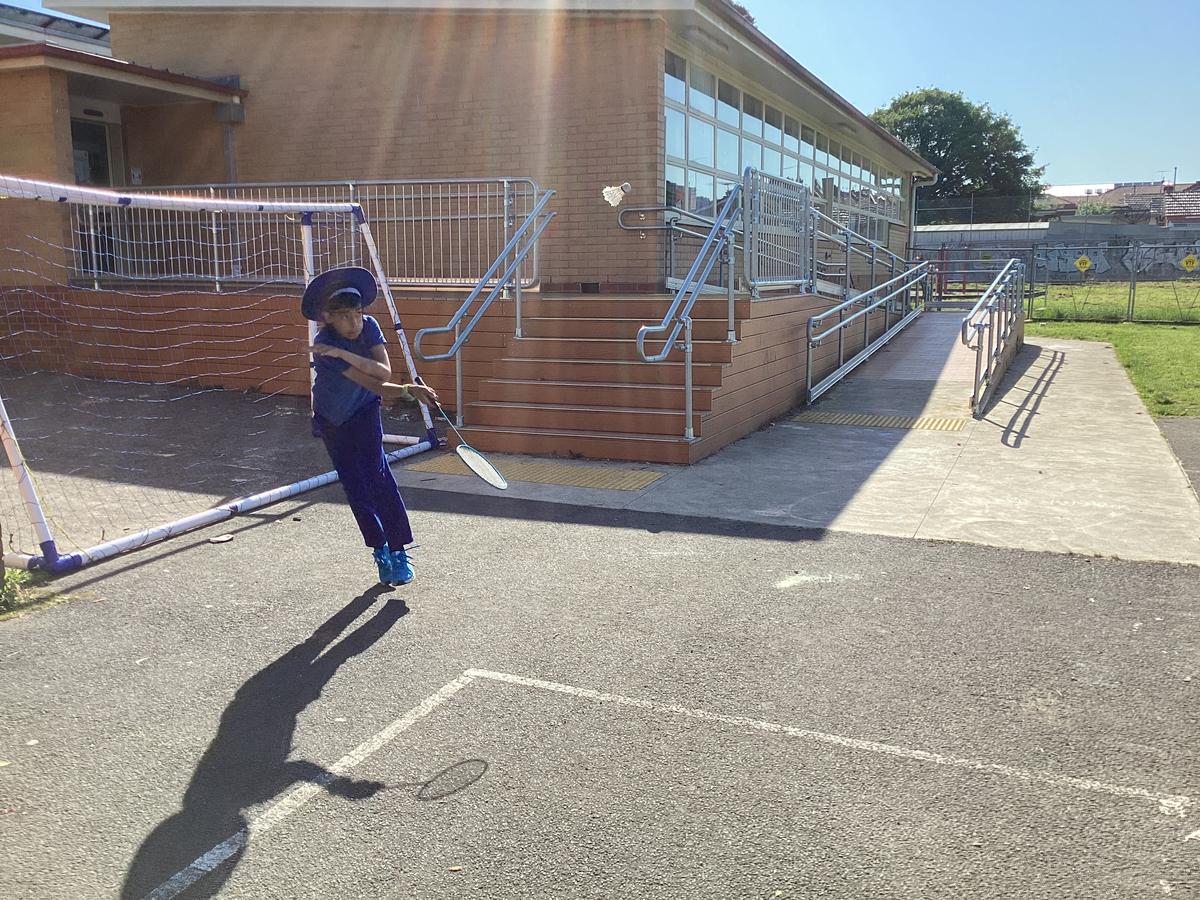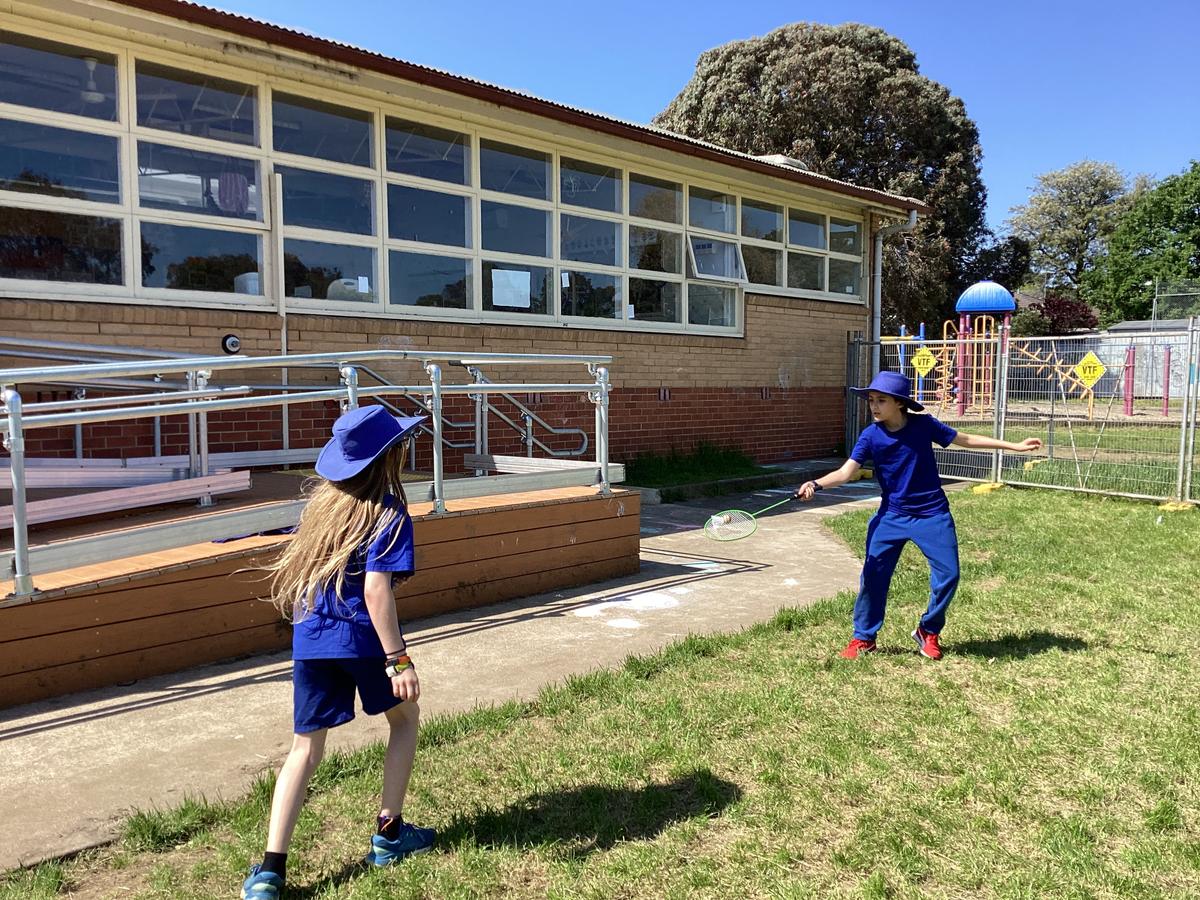Educación Física y Salud
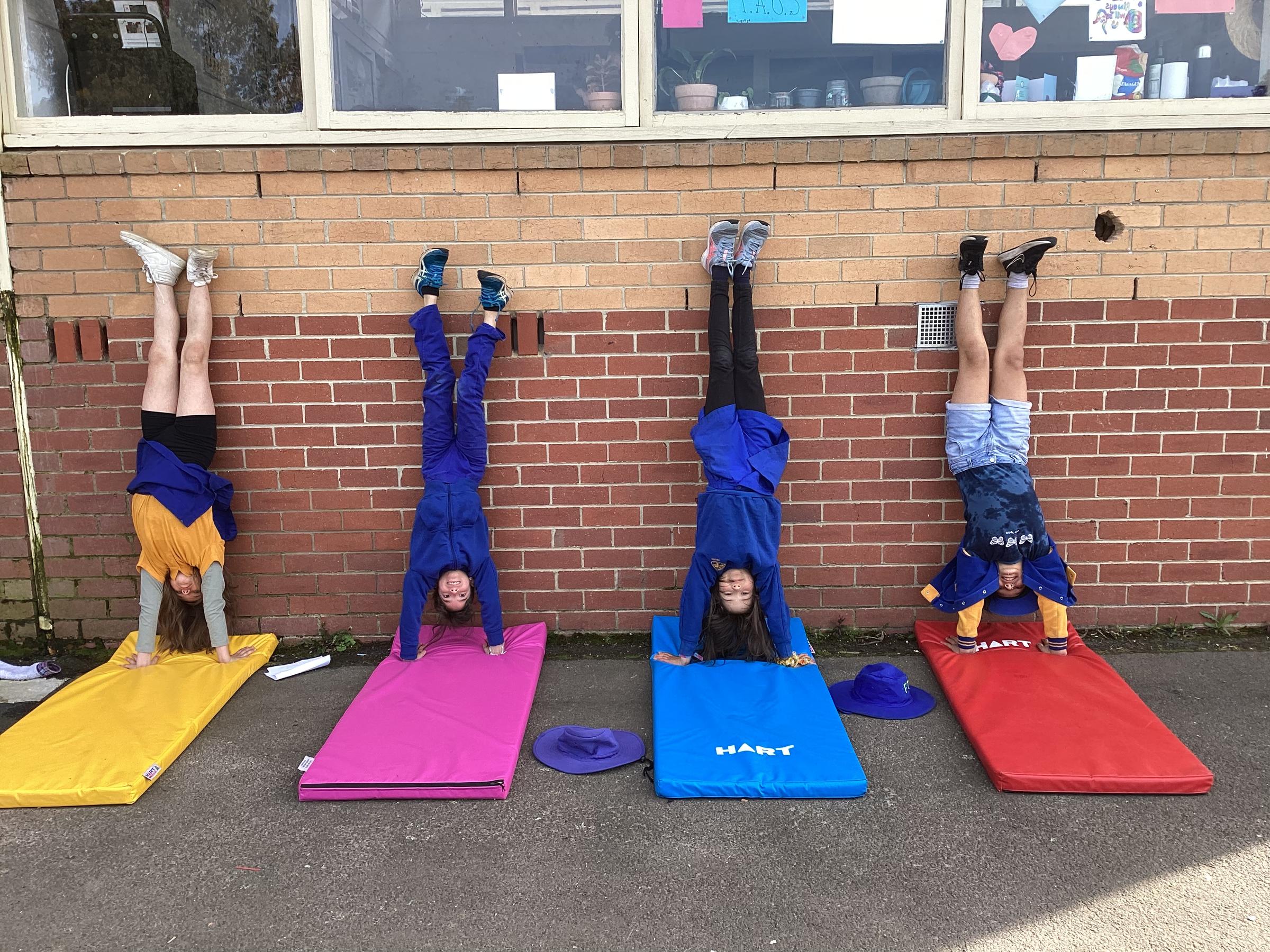
F/1
In the last few weeks of term 3, Foundation and Year 1 students had a great time learning how to saltar a la comba (skip the rope) in Physical Education. They engaged in group and individual physical activities where they had to find the momentum to perform single and multiple saltos (jumps) over the comba. Generally, they found it more challenging to complete multiple saltos on the spot as the combat moved back and forth. So, we attempted different ways to solve movement challenges and discussed which methods were successful or not. We described our feelings after participating in physical activities in each session and how the body responded.
In this new term, we are learning how to patear la pelota (kick a round ball) with accuracy. Students have opportunities to practise patear with the inside of the pie (foot) as they aim to pass or hit a target. Foundation and Year 1 students are encouraged to work cooperatively with a partner and demonstrate how to include others in physical activities. Opportunities to cooperate and collaborate in small and large groups are being provided mainly in juegos de calentamientos (warm-up games) such as “Grupos de..” (groups of).
2/3
After our tennis program in term 3, our students in Years 2 and 3 commenced the “Jumping Rope for the Heart” learning unit, where they enjoyed many activities and games related to saltar a la comba (rope skipping). They practised and refined different saltar skills over a long rope in motion and on the spot. Individual and group actividades de saltar were performed to incorporate other jumping techniques and connect these with another movement – mover los brazos (move arms), correr (run) and squat down. In addition, some students with advanced jumping skills were introduced to perform individual rope skipping, where they had to coordinate arms and legs to get momentum.
In term 4, opportunities have been given to practise various gymnastic skills. Even though the focus has been on individual and group equilibrio (balance), they had chances to practise and refine their voltereta skills (somersault). In these activities, students were encouraged to test alternative responses to movement challenges and predict the success or effectiveness of each. Throughout all our lessons this term, our students have had opportunities to use collaborative skills to complete a movement task, such as a partner balance in gymnastics and team strategy in skipping.
456
Our students in Years 4, 5 and 6 were introduced to volleyball in the last few weeks. They learned different ways to hit the ball, such as underarm service and forearm pass. Our lessons gave us opportunities to demonstrate and understand how to adjust the force and speed of the volleyball to improve accuracy and control. Moreover, they practised defensive and offensive play in modified games where cooperation among team members was vital.
At the end of term 3, our students voted for the sport they most wanted to learn in term 4. There was a tie between badminton and soccer. We have started term 4 learning so much stuff about badminton. Our students had the opportunity to learn about the rules and differences between badminton and other racket games, and we even watched some rallies from the last Olympics. In the previous two weeks, we have practised serving clear shots while still learning to accurately hit the volante (shuttlecock).
Throughout our last lessons in volleyball and badminton, they have had the chance to practise ethical behaviour in sports and the consequences of infringements. Furthermore, they have been encouraged to propose changes to the rules and/or conditions to create a more inclusive game.
Students have been working on a seesaw activity about preventative health care on rainy days. In this unit, we are investigating and learning about the importance of self-care to reduce disease risk.

